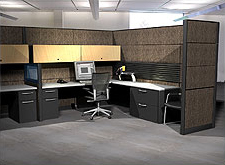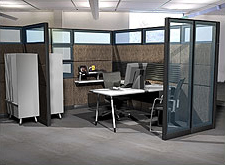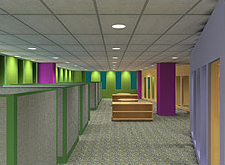Propeller-controlled active tuned-liquid-column damper
https://www.google.com/patents/US6857231
objective of this lit : semi active tlcd with propellor to control the flow of water.
https://www.google.com/patents/US6857231
objective of this lit : semi active tlcd with propellor to control the flow of water.
The TMD has the optimal performance in vibrational control, if the natural period and damping ratio of this TMD are equal to the corresponding tuned period and the optimal damping ratio, respectively. Usually the tuned period is very close to the fundamental period of the structure whose vibration is required to be controlled.
The practical application of TMD is somewhat restricted and limited, this is due to the fact that the mass of TMD is heavy, the mechanism of the spring (4) and dashpot (5) system is complicated and not easy to maintain, it needs large space for TMD and its motion, it needs large power to control the motion of the mass block (3) if an active-control technique is applied, and the structure of the active control system of TMD is also complicated and not easy to maintain. Therefore TMD is not quite popular in practice, particularly for the large structures like a high-rise building.
2. Tuned Liquid Damper (or TLD)
A plane frame with a TLD is shown in FIG. 2. The structure of a TLD is quite simple, it is a liquid tank (7) partially filled with liquid (or water) (8). An appropriately designed water-storing tank on the roof of a high-rise building can serve as a TLD. The liquid weight of TLD is about 0.5˜2.0% of the total weight of a structure which is under vibrational control. The fluid sloshing and oscillation inside the fluid tank (7) due to resonance can provide the force opposite to the direction of the vibration of the structure and can reduce the vibration efficiently.
A plane frame with a TLD is shown in FIG. 2. The structure of a TLD is quite simple, it is a liquid tank (7) partially filled with liquid (or water) (8). An appropriately designed water-storing tank on the roof of a high-rise building can serve as a TLD. The liquid weight of TLD is about 0.5˜2.0% of the total weight of a structure which is under vibrational control. The fluid sloshing and oscillation inside the fluid tank (7) due to resonance can provide the force opposite to the direction of the vibration of the structure and can reduce the vibration efficiently.
The fundamental period of TLD can be adjusted by changing the shape and the dimensions (including the water depth) of the fluid tank (7). The TLD has the optimal performance in vibrational control, if the fundamental period and the damping ratio of this TLD are equal to the corresponding tuned period and the optimal damping ratio, respectively. Usually the tuned period is very close to the fundamental period of the structure under vibrational control.
Although the structure of TLD is simple i.e. a fluid tank (7) and its inside fluid (8), the practical application of TLD is still very limited, particularly for the high-rise building. This is due to the fact that the tuned period of TMD is not easy to be achieved, the mechanism to achieve the optimal damping ratio of a TLD is complicated and not easy to be designed. Furthermore the active-control technique is not easy to be applied to TLD so far, all the practical applications of TLD is only limited to the passive TLD, the active TLD is still not practical and it needs more efforts of future research


3. Tuned Liquid-Column Damper (or TLCD)
A plane frame with a TLCD is shown in FIG. 3. The structure of a TLCD is also quite simple, it is a long U-shape vessel (9) partially filled with fluid (or water) (8). The U-shape vessel (9) is a long circular or rectangular tube as shown in FIGS. 4 and 5. The length of the tube should be at least ten times greater than the diameter or the in-plane dimension of the cross section. The cross section of a TLCD can either uniform or non-uniform, but it is usually symmetrical about the vertical center line of a TLCD. The ends of the vertical columns of a TLCD are usually open. The fluid weight of a TLCD is also about 0.5˜2.0% of the total weight of a structure under vibrational control.
A plane frame with a TLCD is shown in FIG. 3. The structure of a TLCD is also quite simple, it is a long U-shape vessel (9) partially filled with fluid (or water) (8). The U-shape vessel (9) is a long circular or rectangular tube as shown in FIGS. 4 and 5. The length of the tube should be at least ten times greater than the diameter or the in-plane dimension of the cross section. The cross section of a TLCD can either uniform or non-uniform, but it is usually symmetrical about the vertical center line of a TLCD. The ends of the vertical columns of a TLCD are usually open. The fluid weight of a TLCD is also about 0.5˜2.0% of the total weight of a structure under vibrational control.
The fluid flow and oscillation inside the U-shape vessel (9) due to resonance can provide a force opposite to the direction of the vibration and can reduce the vibration of the structure effectively. The natural period of a TLCD can be adjusted by changing the wetted length of the U-shape vessel (i.e. the sum of the length of the horizontal section and the water heads of the vertical columns). The TLCD has the optimal performance in vibrational control, if the natural period and the damping ratio of this TLCD are equal to the corresponding tuned period and the optimal damping ratio, respectively. Usually the tuned period is very close to the fundamental period of the structure under vibration control. In general the damping ratio of a TLCD is small than the optimal damping ratio in practice; therefore the properly-designed artificial orifices, which are made of the buffers (10), installed inside the horizontal section of a TLCD are necessary to achieve the optimal damping ratio. The damping ratio of a TLCD with orifices is strongly dependent of the shape, size, and number of the orifices, and it can be predicted by the test and engineering experience or judgment.
The natural period of an open TLCD can be adjusted by only changing the wetted length; therefore the tuned period for a TLCD is not easy to be achieved and usually we need a great number of TLCD’s in practice. This is why the practical application of TLCD is still quite limited, particularly for the high-rise buildings. The air-compressor control system can accelerate the fluid flow to increase the vibrational-control ability of a TLCD, but the structure of the air-compressor control system including the air valves is complicated and not easy to maintain.
Technique
They used propeller in the path of liquid flow to control the motion.
Technique
They used propeller in the path of liquid flow to control the motion.

























